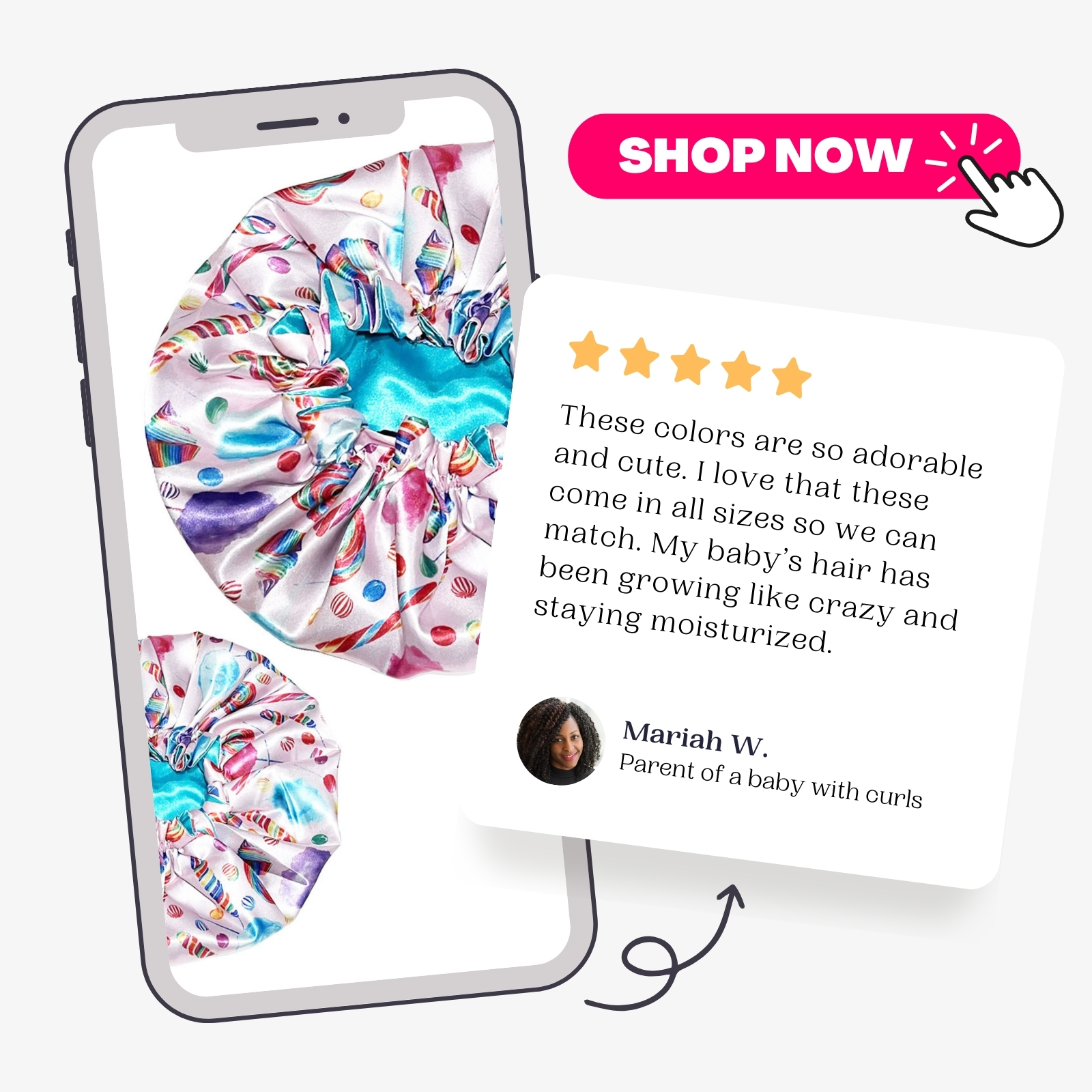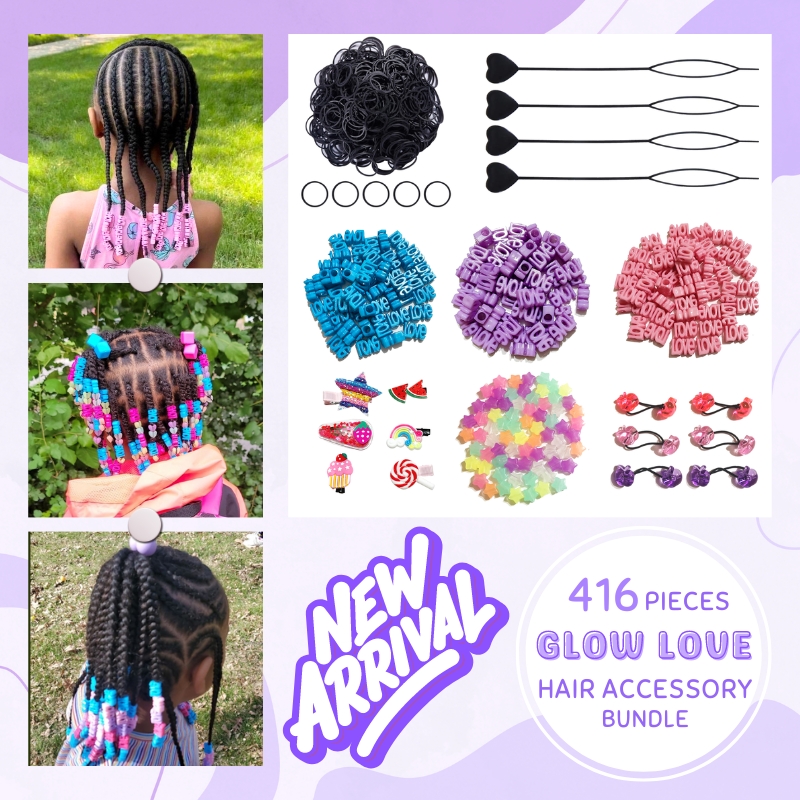
Understanding Product Ingredients
If you are just beginning your child’s natural hair journey and are overwhelmed with the over abundance of natural hair products, here are 10 ingredients to avoid when purchasing natural hair care products for your child:
1. Sodium Lauryl/Laureth Sulfate (SLS) or “Sulfates”— is a detergent used in most shampoos, shaving creams, and bubble baths for its cleansing and foaming properties. Like most harsh detergents found in your shampoo, sulfates strip the hair of its natural oils — often leaving it dry and brittle. Sulfates may also cause eye irritation, skin rashes, and other allergic reactions.
2. Diethanolamine (DEA), Triethanolamine (TEA) — These ingredients are used to stabalize the pH of most personal care products. Depending on the individual, DEA and TEA may cause allergic reactions and eye irritation, as well as dry hair and skin.
3. Parabens (Methyl, Propyl, Butyl and Ethyl) — Parabens are the most commonly used preservative in shampoos, conditioners, and other styling products. The antimicrobial properties of these chemicals help to extend the shelf life of most cosmetics and personal care products by two to three years. Parabens have long been considered safe — but a few recent studies have suggested that these chemicals may actually lead to breast cancer. The validity of these studies have been challenged due to the lack of experimental evidence, but such alarming claims continue to be the subject of further investigation.
4. Diazolidinyl Urea, Imidazolidinyl Urea — Ureas are the most commonly used preservative in cosmetics and personal care products. These ureas also acts as a formaldehyde releaser. Under certain circumstances, exposure to ureas may cause contact dermatitis.
5. Lanolin, Petroleum and Mineral Oil — These cheap ingredients are widely used in greases and pomades formulated for black hair and offer no real moisturizing benefits. These ingredients often weigh the hair down and block the natural oils produced by the scalp from being absorbed by the hair shaft. For a natural alternative, try jojoba, Jamaican black castor, coconut, or sweet almond oils for their conditioning properties.
6. Propylene Glycol — This humectant is commonly found in shampoos, lotions, after-shave, deodorants, mouthwashes, and toothpastes to give a product “glide” or “slip.” This chemical is also an active ingredient in anti-freeze, airplane de-icer and brake and hydraulic fluid. Recent findings indicate that propylene glycol may cause allergic reactions, dermatitis, dry skin, hives, and eczema. Because it is easily absorbed by the skin, the Environmental Protection Agency has issued a mandate requiring workers to wear protective gloves, clothing, and goggles when handling this toxic substance.
7. Synthetic Colors — Artificial colors are used widely in hair care products for aesthetic purposes. These ingredients frequently appear as FD&C or D&C followed by a color and a number (e.g. FD&C Red No. 6 / D&C Green No. 6). Color pigments may cause skin sensitivity and irritation. The safety of these ingredients is also questionable — because they are derived primarily from coal tar, a known carcinogen.
8. Synthetic Fragrances — Synthetic fragrances are present in most shampoos, conditioners, and styling pomades. The word “fragrance” can indicate the presence of up to 4,000 separate ingredients, many of which are synthetic. In some individuals, these compounds can induce headaches, dizziness, rash, skin discoloration, violent coughing, vomiting, and skin irritation. For a safe alternative, try purchasing unscented products from your local Whole Foods Supermarket and adding your own fragrance using all-natural essential oils.
9. Formaldehyde — This cheap preservative is used in hair care products containing water to prevent the growth of bacteria. Formaldehyde is a suspected carcinogen and may cause skin reactions, trigger heart palpitations, or lead to joint pain, allergies, headaches, chest pains, ear infections, and dizziness. Despite its possible harmful side effects, cosmetic manufacturers are free to use formaldehyde in your shampoos, conditioners and lotions without listing it as an ingredient.
10. Coal Tar — Many shampoos designed to treat dandruff contain coal tar — although it’s frequently absent from the product’s list of ingredients. Protect yourself and be on the look out for this compound, which is disguised in many forms (e.g. “Stantar”, “Clinitar”, “Medi-Tar” and “Polytar”). While the FDA acknowledges that coal tar is a carcinogen under certain conditions, it has taken the position that it still safe for use as an active ingredient in most over-the-counter dandruff shampoos. Not surprisingly, most shampoo manufacturers are in agreement and continue to use it. Still, in addition to being a cancer hazard, coal tar has been found to cause allergic reactions, asthma attacks, headaches, nausea, fatigue, nervousness, and lack of concentration.
If this list is overwhelming, stick to this simple rule of thumb: if you can’t pronounce/don’t understand the first five to seven ingredients don’t buy it. Check out some of our DIY recipes as a safer alternative to most “natural” hair products sold in stores.






1 Comment